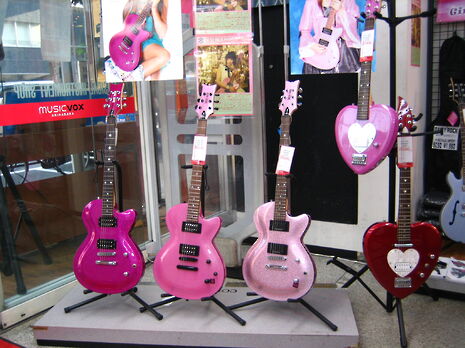Part II: the sociology of Pink
After tackling the history of the colour, Flora Walsh addresses the social constructions associated with pink

According to the sociologist Philip Cohen, our rigid gender-colour tropes are symptomatic of mass marketing. Prior to the gender enlightenment we are beginning to see today, the desire to be ‘gender normal’ was exploited as a marketing device. Retailers jump at any opportunity to tap into a social paradigm at a particular point in time, and if that meant being ‘gender normal’, it was natural from a mass production or marketing perspective to promote this gender-colour divide. As to the reason why the gender-colour pairing converged into what we see today, the historian Jo Paoletti points to the influence of French fashion during the 20th century. The French tradition was to attribute pink to femininity and blue to masculinity, in comparison with the Belgian and Catholic German tradition, which prescribed exactly the opposite. However, since the epicentre of fashion’s post-war development was situated in France, French traditions, along with French innovations, proliferated throughout Western fashion culture.
There have been some attempts to prove that the affiliation of pink with femininity has its roots in human biology. The Italian sociologist, Marco Del Giudice, conducted an extensive search for gender-colour associations of the Google Books database of all the books published in America between 1880 and 1980. From this research, he found that pink appeared to be a feminine colour since the late 19th century, implying that the ‘gender-colour as a marketing construct’ argument could be a scientific urban myth. If the affiliations between gender and colour were not prescribed by the marketing and consumption environment of the 20th century, surely we must consider the question of whether girls are inherently drawn to pink and boys to blue?
Indeed, it is a topic that has fascinated sociologists and psychologists from the 1980s to the 2000s, and several studies seemed to prove that males and females have a congenital sensitivity to the blue and red spectra, respectively. However, explorations of biological colour-gender sensitivities have reached a dead end as a result of concurrent developments in our understanding of colour perceptions and gender identity. We now know that not everyone sees exactly the same colours when looking at the same object – there have even be suggestions that this personal colour discernment might be extreme (so what I identify as green might be someone else’s blue or yellow). In addition, our understanding of gender is experiencing a revolution – no longer do we see gender as a binary system, but as a spectrum of its own. As the divides between genders dissipate, the ability to attribute a particular division of the gender spectrum to a corresponding segment of the colour spectrum becomes increasingly impossible.
So now when you are wandering down the aisles of toys, magazines and clothing, bombarded by pink for girls and blue for boys, you might spare a thought for the marketing mavericks who made our society chromatically cleft in this way. Pink is a colour that has seeped into the darkest periods of human history, as well as being embraced by those who strive for global human rights. Whatever your personal opinion of it, whether you could wear it head to toe, or wouldn’t touch it with a punt pole, there is something to be said for thinking pink
 News / Eight Cambridge researchers awarded €17m in ERC research grants27 December 2025
News / Eight Cambridge researchers awarded €17m in ERC research grants27 December 2025 News / News in Brief: carols, card games, and canine calamities28 December 2025
News / News in Brief: carols, card games, and canine calamities28 December 2025 News / Caius mourns its tree-mendous loss23 December 2025
News / Caius mourns its tree-mendous loss23 December 2025 News / Clare Hall spent over £500k opposing busway 24 December 2025
News / Clare Hall spent over £500k opposing busway 24 December 2025 Interviews / Meet Juan Michel, Cambridge’s multilingual musician29 December 2025
Interviews / Meet Juan Michel, Cambridge’s multilingual musician29 December 2025








